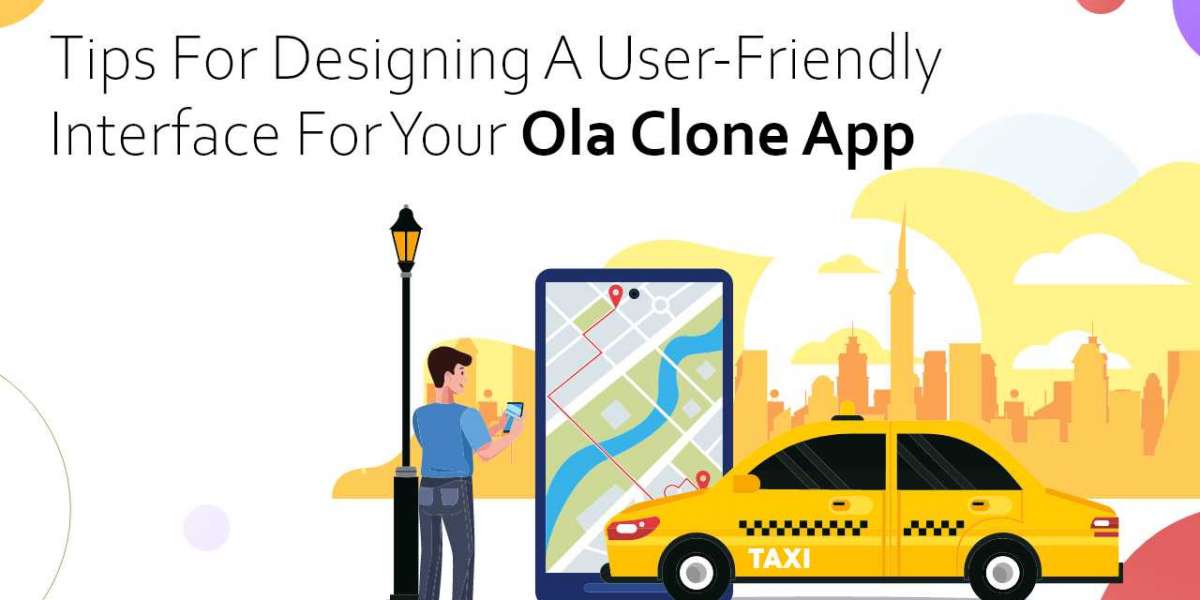Designing a user-friendly interface is crucial for the success of any mobile application, especially for ride-hailing apps like an Ola clone. A well-designed interface ensures that users can easily navigate the app, book rides effortlessly, and have a seamless experience. Here are some essential tips for designing a user-friendly interface for your Ola clone app.
Understand Your Users
Before diving into the design process, it’s important to understand your target audience. Conduct user research to gather insights into their needs, preferences, and pain points. This information will help you create an interface that meets their expectations and solves their problems. Consider factors like the average age of your users, their tech-savviness, and the common scenarios in which they will use the app.
Prioritize Simplicity
Simplicity is key to a user-friendly interface. Users should be able to accomplish their tasks with minimal effort and without confusion. Avoid cluttering the screen with too many elements. Instead, focus on a clean and straightforward design that highlights essential features. Use ample white space to create a balanced layout and improve readability.
Intuitive Navigation
Navigation should be intuitive, allowing users to find what they need quickly and easily. Use familiar icons and labels that clearly indicate their purpose. A well-organized menu structure helps users navigate through different sections of the app without getting lost. Ensure that important actions, like booking a ride or accessing the user profile, are easily accessible from the home screen.
Consistent Design Elements
Consistency in design elements such as colors, fonts, and icons helps create a cohesive and professional look. Use a consistent color scheme that aligns with your brand identity. Typography should be legible, with clear hierarchy to differentiate between headings, subheadings, and body text. Icons should be easily recognizable and used consistently throughout the app.
Responsive Design
Your Ola clone app should offer a seamless experience across different devices and screen sizes. Implement a responsive design that adapts to various resolutions, ensuring that the app looks and functions well on smartphones and tablets. Test the app on multiple devices to identify and fix any layout issues.
Clear Call-to-Actions
Call-to-action (CTA) buttons guide users towards completing key tasks, such as booking a ride or making a payment. Ensure that CTAs are prominently displayed and clearly labeled. Use contrasting colors to make them stand out from the rest of the content. The text on the buttons should be concise and action-oriented, like "Book Now" or "Confirm Ride."
Real-Time Feedback
Providing real-time feedback is essential to keep users informed about the status of their actions. For example, when a user requests a ride, display a loading indicator until the process is complete. If there’s an error, show a clear and helpful error message explaining what went wrong and how to fix it. Positive feedback, like a success message after booking a ride, reassures users that their actions have been successfully completed.
User-Friendly Forms
Forms are a common element in ride-hailing apps, whether for user registration, ride details, or payment information. Design forms that are simple and user-friendly. Use appropriate input types, such as email fields for email addresses and number fields for phone numbers. Break down long forms into smaller, manageable sections to avoid overwhelming users.
Accessibility Considerations
Designing for accessibility ensures that your app can be used by everyone, including people with disabilities. Follow accessibility best practices, such as providing alternative text for images, ensuring sufficient color contrast, and supporting screen readers. Enable users to adjust text size and offer alternative input methods, like voice commands.
Testing and Iteration
Finally, continuously test your app with real users to gather feedback and identify areas for improvement. Conduct usability testing to observe how users interact with the app and where they encounter difficulties. Use this feedback to make iterative improvements, refining the interface to better meet user needs.
Conclusion
Designing a user-friendly interface for your Ola clone app is essential for attracting and retaining users. By understanding your audience, prioritizing simplicity, ensuring intuitive navigation, and maintaining consistency, you can create an interface that offers a seamless and enjoyable user experience. Incorporate real-time feedback, user-friendly forms, and accessibility considerations to make your app accessible to a broader audience. Continuous testing and iteration will help you refine the design, ensuring that your app meets user expectations and stands out in the competitive ride-hailing market.







